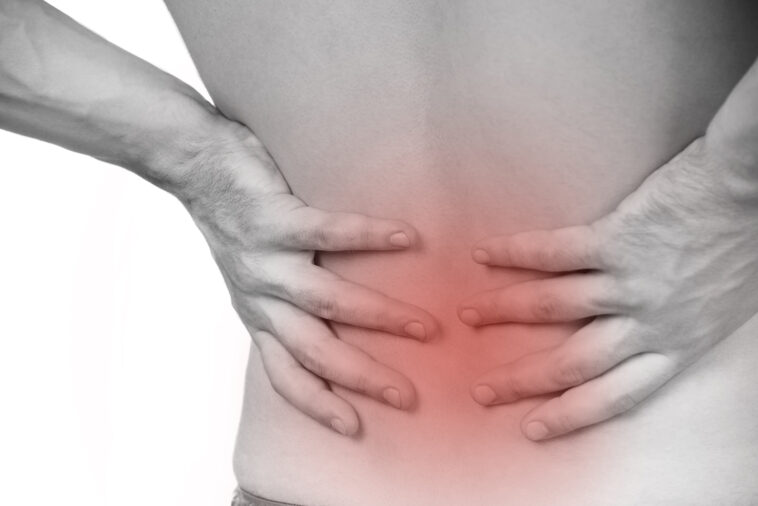How will it feel if you can not sit or even stand properly?
Miserable? Right. That’s how low back pain makes your life look like if you don’t care to intervene. We don’t mean to scare you, but that’s just a cautionary tale so that you can stay alert and take steps early. But how will you know that this pain you’ve been feeling for the past few days is low back pain in the first place? Keep reading to learn all the basic stuff you need to know about this condition.
What is Lower Back Pain?
Symptomatically, lower back pain is almost any pain in the back at the waist down or pelvis level, which generally includes the hip joint, lower vertebrae, and other underlying structures. L4-L5 and L5-S1 are the main two segments of the lumbosacral region of the vertebral column. Any pain in this region is popularly known as Lower Back Pain.
Globally it is largely common. Almost 7.5% of the global population and 8 out of 10 individuals over 30 suffered or have been suffering from low back pain at some point in their life.
Risk factors
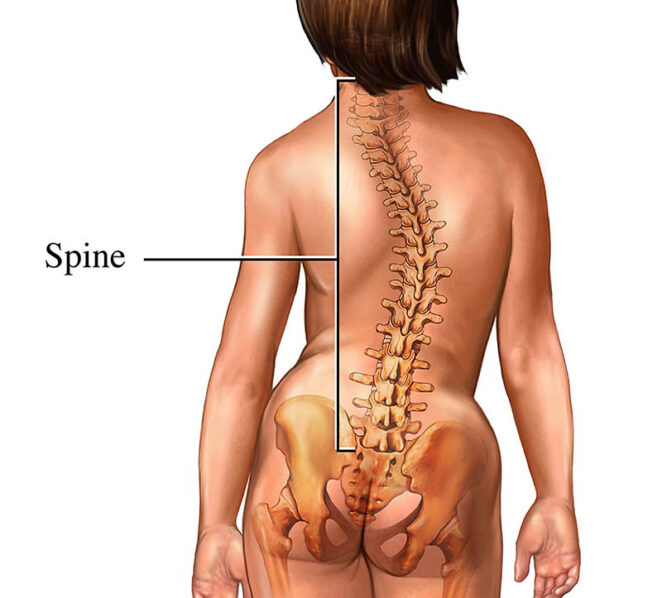
Lower back pain is almost inevitable; you’re likely to get it at least once in some phase of your life. It often occurs as a result of sudden strain or injury to the muscles and ligaments.
Yet some common predisposing factors make you susceptible, like :
- Age: Soft cushion-like vertebral discs start to erode and wear away with advancing age, making the spine stiff. Thus, people above 30 years of age are more prone to get lower back pain.
- Weight: Obesity puts an extra load on the joints and musculature at the back. This leads to excessive stress causing wear and tear to the ligaments and cartilage around the joint.
- Occupational hazard: People who need to bend or lift heavy weights daily due to work obligations are more likely to injure their back muscles and ligaments.
- Structural problems: Genetic susceptibility is a vital reason, as a person may have defective spinal columns (scoliosis, kyphosis, lordosis) and malformed weak joints (rheumatoid arthritis).
- Other diseases: people already suffering from other painful, restrictive diseases like pathological fracture, spondylosis, spondylolisthesis (vertebrae slip out of the spinal column), osteoarthritis, cancer, etc., are prone to suffer from back pain.
Prevention
Many diseases bring along lower back pain as an added complaint, and you can’t actually prevent it.
But you can take measures to certainly decrease the chance of getting back pain due to lifestyle and work.
- Maintain a healthy weight. Obesity leads to extra pressure on joints and ligaments.
- Exercise daily to keep your joints and muscles strong
- Make abdominal muscles strong as they maintain the stability of the back.
- Lift heavy weights by holding them close and with your legs, as in doing a squat. Bending your torso while having a huge pressure on only leads to a sudden snap and tear.
Symptoms
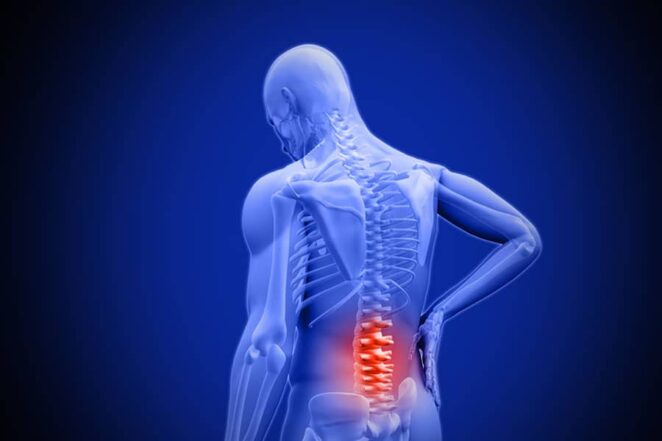
Symptoms are quite typical but may come and go haphazardly. Events causing a sudden stress to the back structures (bending during exercise, lifting heavy luggage, etc.) trigger the pain.
Sharp, burning, or dull but intense pain is most common, spreading from the waist into the legs. Lying down helps with temporary relief.
Other symptoms might be the following:
- Stiffness and immobility
- Posture problem: patients feel comfortable standing or sitting in a specific posture only (even if it looks unusual), as other positions are painful.
- Muscle spasms
- Sleep problems
- Fever, unexplained bowel and bladder problems
Diagnosis
Lower back pains are easy to diagnose; a general physical examination and clinical sign assessment are enough.
Still, if needed, your doctor may ask for imaging tests like spine X-ray, MRI, CT scan, Electromyography (to check any associated neuropathy), etc., to detect broken or malformed bones, damage in the soft tissues (torn ligaments and worn out cartilages) and other underlying pathology.
Treatment
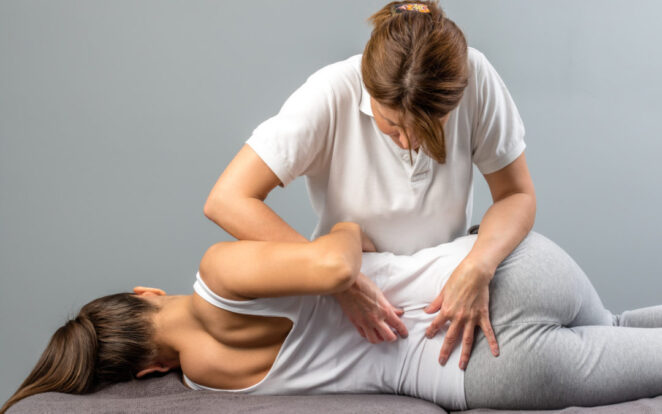
Lower back pain isn’t a very threatening condition; it usually heals within a few days with Over-the-counter medicines and a combination of hot/ cold compression and adequate rest.
Try not to impose pressure or extra stress, but staying active helps in healing with proper blood circulation and soft tissue growth.
Other clinically accepted treatment regimens are:
- Physical therapy: Strengthening muscles in your core and lower body helps support your spine better. Physical therapy exercises are tailored to individual patients and may include stretching exercises, strengthening exercises, mobilization techniques, and posture training.Additionally, incorporating specialized braces and supports, such as those provided by Ortho Bracing, can assist in providing targeted support and stability during physical therapy. They offers a range of products designed to enhance the effectiveness of therapy sessions, promoting proper alignment and reducing strain on the spine. Working with a physical therapist and considering options can optimize the benefits of your physical therapy program, aiding in your recovery and improving overall spine health.
- NSAIDs: Over-the-counter NSAIDs such as ibuprofen or naproxen can help reduce both inflammation and pain associated with low back pain.
- Steroid injections: Injecting a steroid medication directly into your affected area can help reduce inflammation that contributes to low back pain. The effects may last several months before you need another injection.
- Nerve blocks: Medicines injected near nerves that supply your painful area may provide relief by blocking pain signals from getting to your brain. This type of treatment is usually used for specific areas that have not responded to other treatments such as physical therapy or medications.
- Other medications: Your doctor may also suggest additional medicines like tricyclic antidepressants, anticonvulsants, or muscle relaxants if you don’t respond to other treatments for long-term relief from chronic lower back pain.
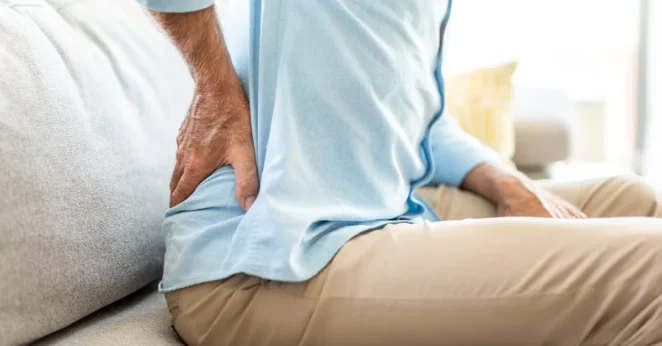
Regular exercise and stretching can help keep your muscles strong and flexible, ultimately reducing your risk for low back pain. A healthy diet rich in vitamins and minerals, as well as adequate hydration, are also necessary components for maintaining good spinal health. Additionally, proper ergonomics while standing or sitting can help reduce the strain placed on the lower spine and legs while carrying out everyday activities.
You don’t need to think much about therapeutics. Rather reach your nearest pain management specialist doctor for early and prompt treatment. Don’t know anyone like that? No worries.
To meet the team of world-class physiotherapists and professional chiropractic and osteopathic doctors who are experienced enough to help you relieve the symptoms and get back to the old, carefree life without pain, visit https://www.activephysiotherapy.net.au
So, are you suffering from back pain for a long time? Is it affecting your work and well-being? Let’s not panic, but not delay either, as timely treatment can only get you a quick recovery.
Take care, and stay safe.



